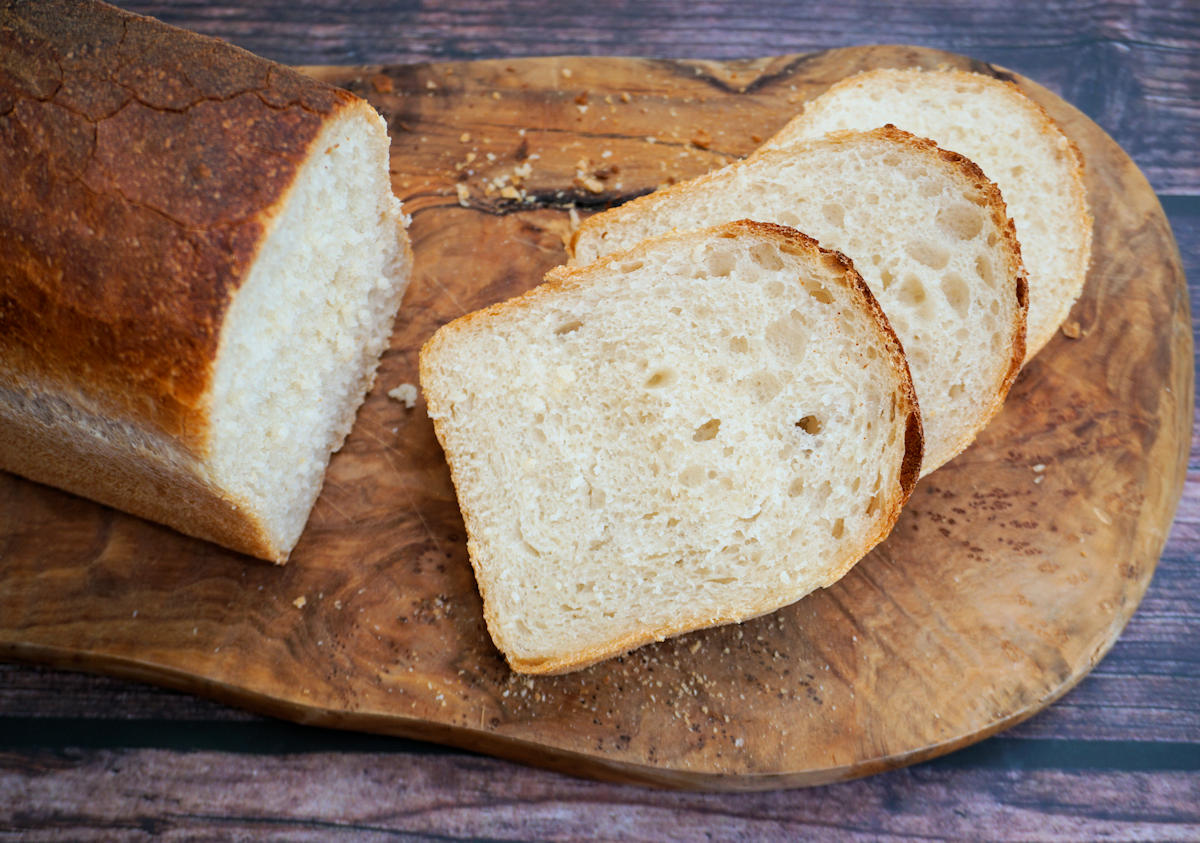Portuguese pão de água, which means ‘water bread’, is a white, airy and light loaf, perfect for sandwiches.

Portuguese water bread
This is an elusive bread, and I’m not quite sure whether it actually exists. The only reliable recipe I have managed to find comes from the Thermomix recipe site, Cookidoo.
There is another, which intrigued me greatly as it made for completely liquid dough, but it certainly was a recipe for disaster, not for water bread – only the first word was apt in the name.
I borrowed the idea of using sparkling water though and I think it’s a great discovery. It adds a lot of lightness to the texture, which is logical, as carbon dioxide produced by yeast is what makes bread rise, and air bubbles are the proof of success in most breads’ crumb.
How is pão de água made?
The process takes place over two days with the ferment prepared the night before baking. Sparkling water and yeast, plus approximately half the amount of flour and you can mix it with a spatula or a spoon.
It sits on the worktop overnight, bubbling like mad. In the morning it might even look like it has collapsed a little with all that effort, but that’s perfectly fine.
After the addition of the remaining flour and salt, it needs some work: either 10 or so minutes in the standing mixer or about twice as long by hand, on a flour dusted surface.
It will still be quite sticky as the hydration of this dough is relatively high, but it should become less so, and smoother and more elastic.
Proving should take about one and a half hours, until the dough doubles in volume.
It will fit a 2-pound loaf tin which ought to be thoroughly buttered.
When the dough has risen, it needs to be handled very gently as there is virtually no second rise. None of that punching down or knocking out air!
Turn it out onto a floured worktop very gently, then arrange with your hands into a rough rectangle, as wide as your tin. The only shaping involved is folding a third of the dough width wise towards the middle, then folding the opposite third over it and delicately pinching to seal.
To transfer it into the tin it’s best to roll it into it, laid on its side. You should aim for the seam to be at the bottom but, trust me, it never happens.
And that’s it – it’s off to the oven, together with a generous squirt of a water spray.
It takes about half an hour to bake and it comes out browned and risen, and impressively crusty. Watch out for shards of crust flying everywhere when you cut the first slice!
Easy to make, satisfying to eat
Let’s be honest: for the true afficionados of sourdoughs and elaborate loaves, this is surely a substandard, bish-bash-bosh product.
But the ease will be appealing to other, not so proficient bakers. And sometimes you really need just a plain white, fluffy loaf, baked in a tin, and great for sandwiches.
It also toasts like a dream.
More easy bread recipes
Classic Jim Lahey’s no knead bread is a very easy recipe, unfailingly successful especially if you have a Dutch oven or an ordinary cast iron casserole dish.
This one is not only no-knead, but also no-shape! Lazy bread ferments over 18 hours to gain flavour but there’s no real effort involved in making it.
Cheat’s sourdough or how to get close to the sourdough taste in 24 hours. Crusty on the outside, chewy crumb, you might be easily fooled into thinking it’s the real thing.